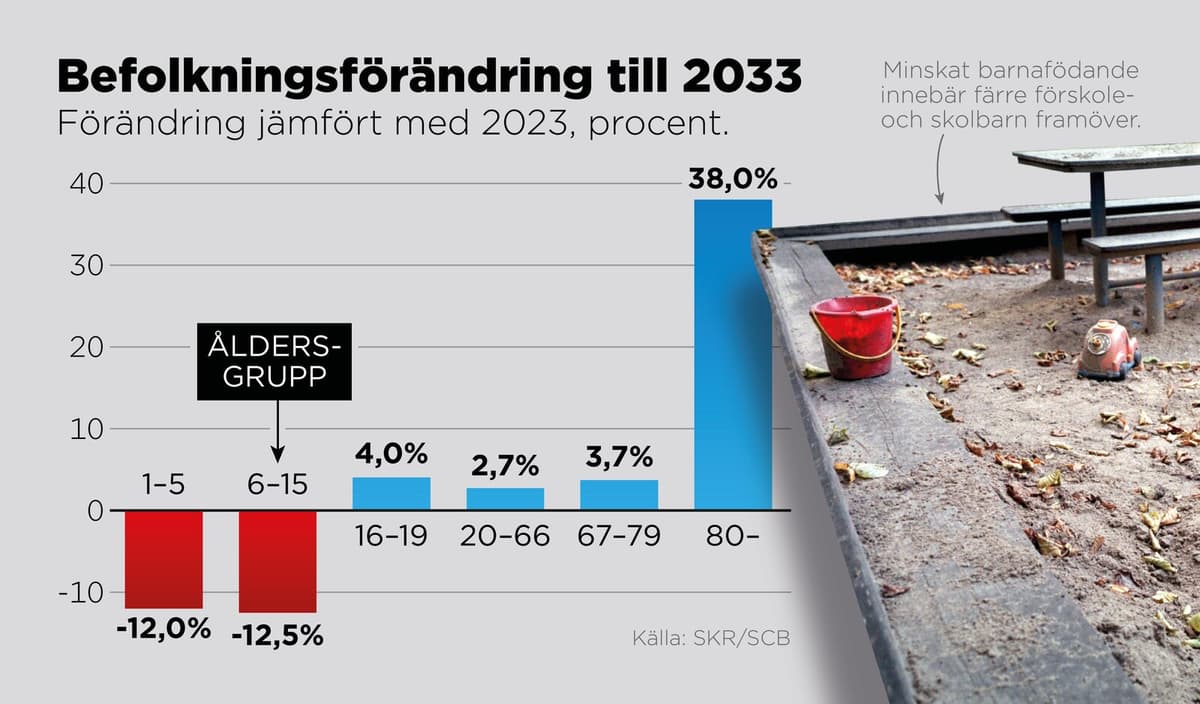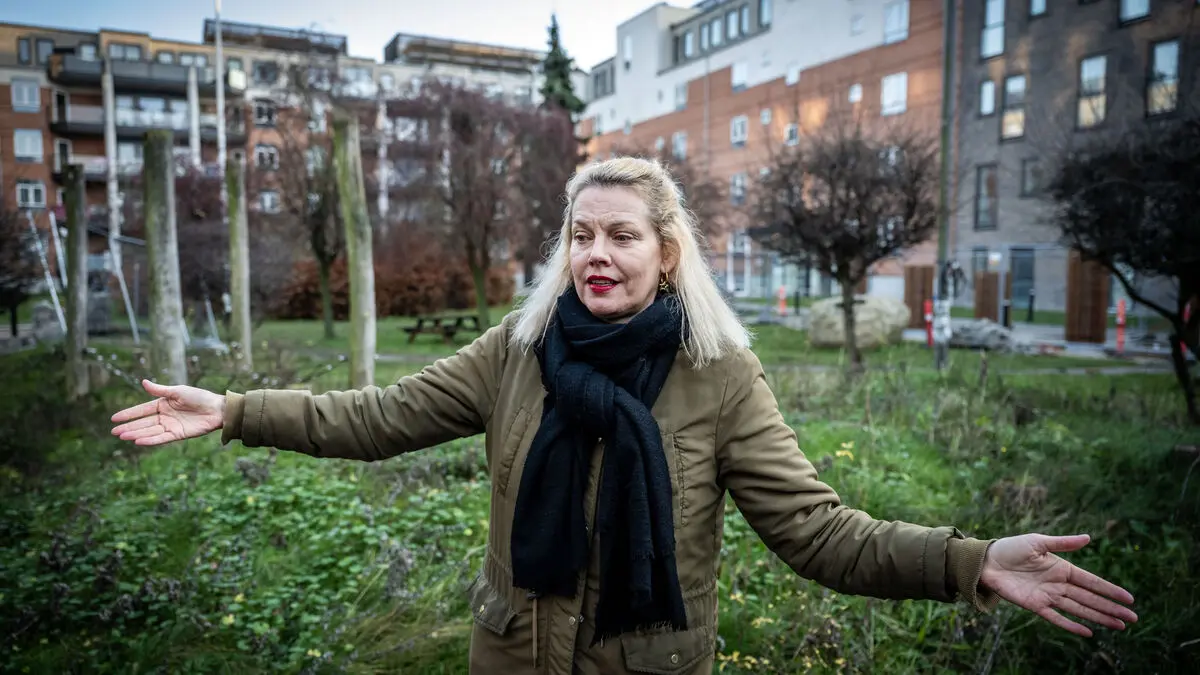Everything points to a long-term change and then we need to build something that is sustainable, says Monica Sonde, department head at the Swedish Association of Local Authorities and Regions (SALAR).
The Swedish Statistics Office's latest population forecast has redrawn the map. Although the population is increasing, it is doing so at a much slower rate than previously predicted. This is mainly due to a decline in births. There will therefore be even fewer children in the years to come.
By 2033, the number of preschool children will have decreased by almost 70,000 compared to 2023, while the number of elementary school students will have decreased by 156,000, according to SALAR's compilation.
Some municipalities may have been caught off guard by the rapid pace of change, says Monica Sonde.
Increasing proportion of elderly
At the same time, the group of 80-year-olds and older is growing rapidly. By 2033, this group will have increased by 233,000 people, or 38 percent. SALAR has pointed out that preschools may need to be closed – or converted into elderly care facilities.
However, SALAR also warns that personnel changes may be necessary. This primarily affects childcare workers and staff without education in the field.
We need to take care of the employees who will no longer be needed in preschools. Employees who have valuable experience and could contribute to, among other things, elderly care and activities within the Act on Support and Service for Persons with Certain Functional Impairments, says Monica Sonde.
The transition will not be easy, but it is necessary, she continues.
Municipalities must start early to have talks with those affected, provide a picture of what working in elderly care entails, and implement targeted education initiatives.
Multiple factors
How the shrinking cohorts of children will affect the need for preschool teachers and teachers in the coming years remains to be seen. The Swedish National Agency for Education will publish a forecast in January – but this will also take into account other factors, such as retirements, teachers leaving the profession, and the proportion of unqualified teachers.
Today, we have a teacher shortage. There is a low teacher qualification in several school forms and in certain subjects. We also see regional differences. So, regardless of what the total need for teachers will look like at the national level, we still have a challenge with teacher supply, says Sanna Vent, education counselor and responsible for the forecast.
In several municipalities, budget cuts have affected preschools and schools. Childcare workers, teacher assistants, and even teachers have been laid off. Another factor is what political decisions will be made in the future.
This is something we cannot predict. But it is important to note that the authorities have the opportunity to retain qualified teachers when the number of children and students decreases, and thus achieve a higher qualification, says Sanna Vent.
Municipalities where the number of children (1-5 years) decreases the most (in percent), as well as the country, Stockholm, Gothenburg, and Malmö during the period 2023-2033:
Dorotea -32 percent
Arjeplog -28
Haparanda -28
Vilhelmina -27
Sorsele -26
--
Stockholm -14
COUNTRY -12
Gothenburg -10
Malmö -9
Source: SCB/ SALAR
Municipalities where the number of schoolchildren (6-15 years) decreases the most (in percent), as well as the country, Stockholm, Gothenburg, and Malmö during the period 2023-2033:
Haparanda -34 percent
Dorotea -29
Lomma -27
Högsby -27
Vaxholm -26
---
Stockholm -20
Malmö -14
COUNTRY -12
Gothenburg -12
Source: SCB/SALAR





